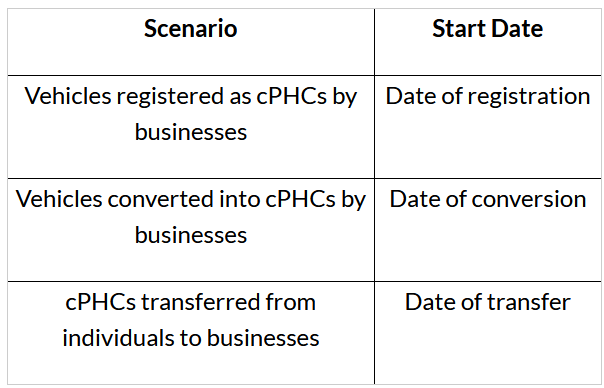A new mandatory three-year lock-in period will be imposed on all newly registered or converted chauffeured private-hire cars owned by businesses, as well as those transferred from individuals to businesses, starting Wednesday (19 February).
The rule applies to vehicles with Certificates of Entitlement (COE) issued as part of the ongoing COE bidding exercise, which concludes on the same day.
The Land Transport Authority (LTA) announced the measure to ensure that businesses acquiring such vehicles primarily use them for leasing to drivers who provide ride-hailing services.
By enforcing the lock-in period, LTA seeks to prevent the premature conversion of these vehicles out of the chauffeured private-hire car scheme, which could affect the availability of cars for point-to-point (P2P) services.
LTA had initially planned to announce the requirement after the current COE bidding exercise.
However, due to an unintended information release by its vendor, NCS, some industry players were informed ahead of the official announcement.
“Due to an unintended release of information by our vendor NCS, which should not have happened, some industry players received notification of this new lock-in period before the planned announcement date,” LTA said in a statement.
“To ensure transparency and fairness for all stakeholders, LTA has decided to bring forward the implementation of this new policy to 19 February, before the close of the COE bidding process,” the authority added.
Transfer rules and exemptions
Under the new rule, business-owned chauffeured private-hire cars that already have a lock-in period may still be transferred to another business, with the remaining lock-in duration carried over. However, these vehicles cannot be transferred to individuals.
The lock-in period does not apply to business-owned chauffeured private-hire cars that were registered, converted, or transferred before 19 February. Such vehicles can continue to be transferred between businesses without triggering a lock-in period.
Chauffeured private-hire cars owned by individuals are also exempt from the rule. These vehicles are often used for both ride-hailing services and personal transport.
The three-year lock-in period will commence based on the following scenarios:

COE demand trends
The decision to introduce the lock-in period follows concerns over fluctuations in COE demand.
In November 2024, Transport Minister Chee Hong Tat noted in Parliament that the primary driver of rising COE prices in recent quarters was strong demand from local individual buyers, rather than from foreign buyers or car-leasing companies.
According to government data, successful COE bids from Singapore residents accounted for 84 per cent of all bids so far this year, a significant increase from 69 per cent in 2023 and 66 per cent in 2022.
In contrast, foreign buyers made up only 2 to 3 per cent of COE bids, while car-leasing companies’ share fell to 10 per cent year-to-date, down from 24 per cent in 2023 and 26 per cent in 2022.
Chee highlighted that the fluctuating demand from car-leasing companies makes it challenging to create a separate COE category for private-hire companies.
This variability in demand has contributed to the decision to introduce measures like the new lock-in period to ensure a stable supply of vehicles for the ride-hailing industry.
The post Three-year lock-in period for business-owned chauffeured private-hire cars from 19 February appeared first on The Online Citizen.


